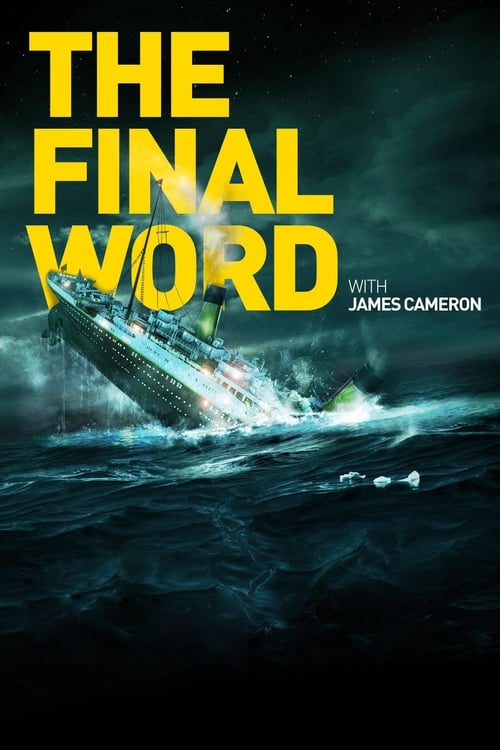
Ask Your Own Question
What is the plot?
More Movies Like This
Browse All Movies →
What is the ending?
In the ending of "Saving the Titanic," the crew and engineers of the Titanic work tirelessly to save as many passengers as possible as the ship sinks. They face overwhelming odds, but their bravery and determination shine through. Ultimately, the ship succumbs to the icy waters of the North Atlantic, and many lives are lost, but the efforts of the crew are highlighted as they prioritize saving others over their own safety.
As the film approaches its climax, the tension escalates aboard the Titanic. The ship has struck an iceberg, and chaos begins to unfold. The engineers, led by Chief Engineer Joseph Bell, are acutely aware of the gravity of the situation. They understand that the ship is doomed, yet they remain committed to their duty. Bell, along with his team, works feverishly in the engine room, trying to keep the ship operational for as long as possible.
Scene by scene, the narrative unfolds with a focus on the internal struggles of the characters. Bell is portrayed as a steadfast leader, grappling with the weight of responsibility for the lives of the passengers and crew. His determination is palpable as he instructs his men to maintain the engines, even as water begins to flood the lower decks. The camera captures the sweat on their brows and the grim expressions on their faces, reflecting their understanding of the impending disaster.
As the ship begins to list, the crew's efforts intensify. They hear the distant cries of passengers and the chaos above, which serves as a stark reminder of the reality they are facing. Bell's internal conflict deepens; he is torn between the instinct to save himself and the duty to protect others. He rallies his team, urging them to focus on their tasks, emphasizing the importance of their work in the face of despair.
Meanwhile, scenes shift to the upper decks, where passengers are beginning to realize the severity of the situation. The lifeboats are being launched, but there is confusion and panic. The film juxtaposes the frantic efforts of the crew below with the chaos above, highlighting the stark contrast between the calm determination of the engineers and the fear of the passengers.
As the ship's situation becomes increasingly dire, Bell makes the decision to stay with the engines, knowing that the ship will soon be lost. He instructs his men to abandon ship when the time comes, but he remains resolute in his mission to keep the engines running as long as possible. The emotional weight of this decision is heavy; Bell understands that his choice may cost him his life, but he is driven by a sense of duty and honor.
In the final moments, the Titanic's fate is sealed. The ship begins to break apart, and the water rushes in. The engineers, still at their posts, are engulfed by the rising tide. Bell's last moments are filled with a mix of fear and resolve as he watches the ship succumb to the ocean. The screen fades to black, leaving the audience with the haunting image of the ship disappearing beneath the waves.
The film concludes with a poignant reminder of the bravery of those who worked tirelessly to save others, even in the face of certain death. The fate of the main characters is sealed with the sinking of the Titanic; many, including Bell and his team, are lost to the sea, while a few passengers manage to escape in lifeboats, carrying with them the memory of the heroism displayed by the crew. The ending serves as a tribute to the sacrifices made by those who chose to put others before themselves in their final moments.
Is there a post-credit scene?
The movie "Saving the Titanic," produced in 2012, does not feature a post-credit scene. The film concludes with a poignant focus on the events surrounding the sinking of the Titanic, emphasizing the heroism and struggles of the engineers and crew as they work tirelessly to save as many lives as possible. The narrative wraps up with a sense of reflection on the tragedy and the sacrifices made, leaving the audience with a somber but respectful acknowledgment of the historical event.
What role does the character of Thomas Andrews play in the story?
Thomas Andrews is portrayed as the ship's designer, deeply invested in the Titanic's maiden voyage. His character is depicted as passionate and dedicated, showcasing his commitment to the ship's safety and the well-being of its passengers. As the ship begins to sink, Andrews is seen working tirelessly to help others, demonstrating his selflessness and bravery.
How does the character of Captain Edward Smith respond to the crisis aboard the Titanic?
Captain Edward Smith is depicted as a seasoned and authoritative figure, initially confident in the ship's capabilities. However, as the reality of the disaster unfolds, he transitions from a state of disbelief to one of urgency and responsibility. His emotional turmoil is evident as he grapples with the gravity of the situation, ultimately prioritizing the safety of his crew and passengers.
What actions do the crew members take as the Titanic begins to sink?
The crew members are shown in various states of panic and determination as the ship starts to go down. Some are depicted as trying to maintain order, directing passengers to lifeboats, while others are overwhelmed by fear. The film highlights their struggles, showcasing moments of heroism as they attempt to save lives, even at the cost of their own safety.
How does the character of Ismay influence the events on the Titanic?
Ismay, the managing director of the White Star Line, is portrayed as ambitious and somewhat self-serving. His insistence on maintaining the ship's speed and promoting its luxury creates tension among the crew. As the disaster unfolds, his character is shown grappling with guilt and fear, revealing a complex mix of pride and regret as he faces the consequences of his decisions.
What is the significance of the lifeboat scenes in the film?
The lifeboat scenes are crucial in illustrating the chaos and desperation of the sinking. They depict the emotional struggles of passengers as they face the reality of survival. The film captures the heart-wrenching decisions made by individuals, the frantic efforts to fill the lifeboats, and the heartbreaking moments of separation, emphasizing the human cost of the tragedy.
Is this family friendly?
"Saving the Titanic," produced in 2012, is a historical drama that focuses on the events surrounding the sinking of the Titanic. While the film is educational and offers a glimpse into the heroism and struggles of the ship's crew, it does contain some potentially objectionable or upsetting scenes that may not be suitable for younger audiences or sensitive viewers.
-
Depictions of Panic and Chaos: The film portrays the moments of panic and chaos as the ship begins to sink, which may be distressing for children. The fear and confusion of passengers and crew are palpable, creating a tense atmosphere.
-
Loss of Life: There are scenes that depict the tragic loss of life, including the emotional reactions of characters as they confront the reality of the disaster. This can be quite heavy and may evoke strong feelings of sadness.
-
Emotional Turmoil: Characters experience intense emotional states, including fear, despair, and hopelessness. These moments can be quite powerful and may be overwhelming for younger viewers.
-
Realistic Portrayal of the Disaster: The film does not shy away from the harsh realities of the Titanic disaster, including the struggles of individuals trying to survive. This realism can be upsetting for some viewers.
-
Character Sacrifice: There are moments where characters make significant sacrifices for others, which can be both heroic and heartbreaking, potentially leading to emotional distress.
Overall, while "Saving the Titanic" is a poignant retelling of a historical event, its themes and emotional weight may not be suitable for all children or sensitive individuals. Viewer discretion is advised.




































